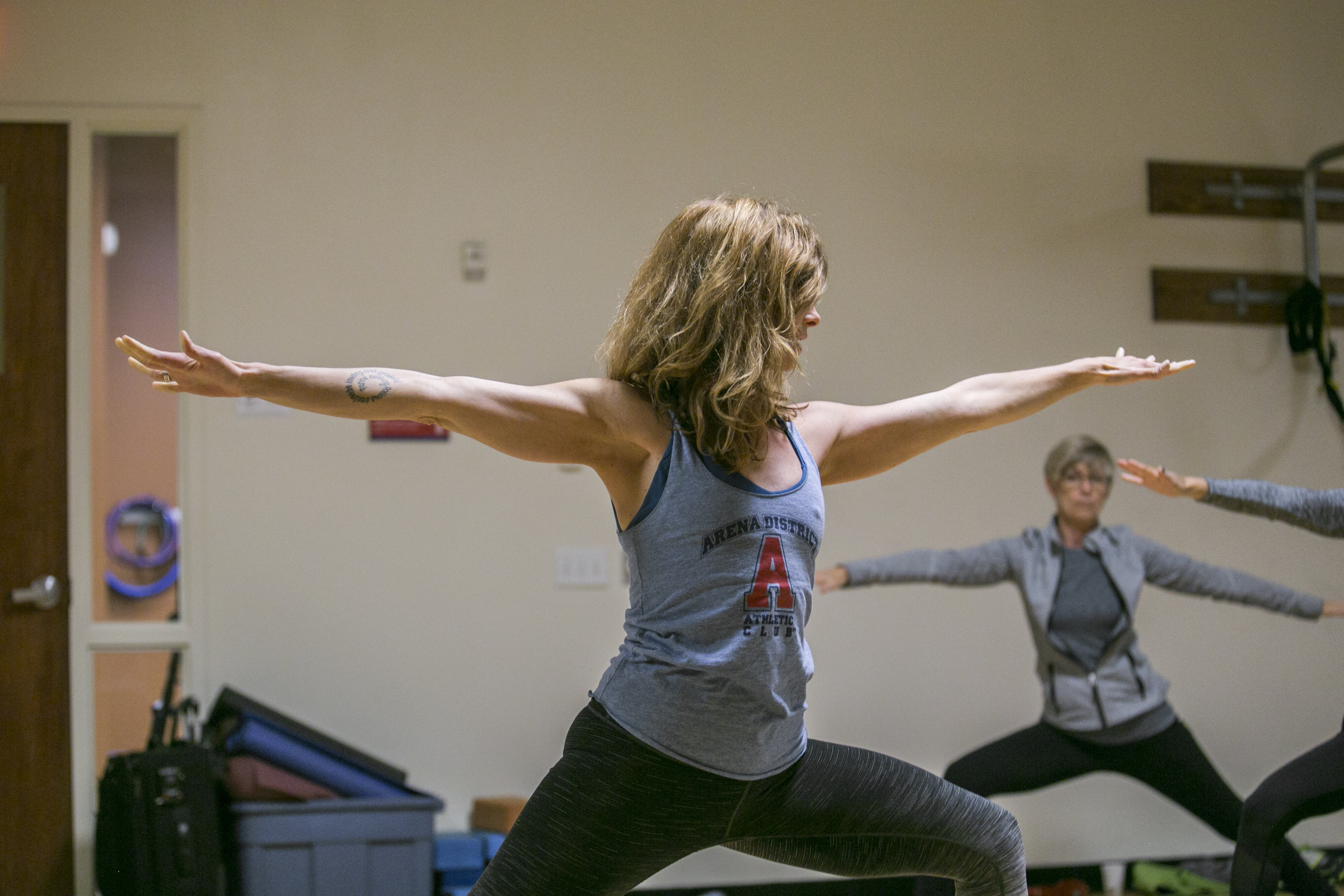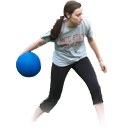
5 Reasons Why Yoga Is Good for Athletes
5 Reasons Why Yoga Is Good for Athletes
Thinking about trying yoga for the first time? The winter months are the perfect time to extend out of your comfort zone, and you’ll be rewarded for your efforts. The Athlete’s Guide to Yoga author Sage Rountree shares five reasons to give it a try.
Flexibility
You probably think of yoga as primarily stretching—or even contortionism. Indeed, flexibility is a big part of contemporary Western yoga. Practicing the postures will stretch tight muscles and encourage use of your full range of motion. Tight muscles are more prone to acute injury, in the form of muscle strains and tears. Loosening up those tight spots will not only help prevent such injury, it will help prevent repetitive-use injuries by allowing the body to move smoothly during your training. Stretching moves you through your natural range of motion, which is lost if it is not used regularly.
Beyond physical flexibility, yoga cultivates flexibility of mind. The poses, breath exercises, and meditation practices all encourage focus on the present moment. By letting go of memories of the past and projections into the future, we can find happiness in the here and now. As you gain experience with yoga, you’ll come to see that the mind will heave you through highs and drag you through lows, just as happens during training. Staying aware of the present without feeling overwhelmed builds equanimity, the capacity to remain calm no matter what comes your way. Keeping your brain—or one metaphorical foot—in the present while outside forces try to bend you in various directions is the equivalent of mental flexibility.
Strength
Yoga works holistically to strengthen the body as a unit. The exercises are all closed-chain, performed with hands or feet in contact with the floor (as opposed to an open-chain exercise like a biceps curl), and use body weight. Some poses are held static, engaging the muscles isometrically (holding the fibers long against resistance). Others, such as sun salutations, involve flowing from pose to pose, engaging and releasing the muscles through concentric and eccentric contractions.
Practiced correctly—with attention to alignment—yoga confers joint stability, just as weight-room strength training does. The regular practice of yoga postures trains the muscles and tendons to stabilize the joints, which in turn helps avoid both acute and repetitive-stress injuries. The standing poses are especially good for strengthening the small stabilizing muscles of the lower leg while stretching the hip muscles. This combination leads to greater power and fluidity in sports.
Yoga will also increase your core strength, not just in poses that specifically target the core but also in standing and balance poses. These postures help create whole-body functional strength and encourage greater awareness of the body and the breath.
Holding challenging poses also teaches mental strength. On the mat, you will observe your mental and emotional reactions to your physical situation and learn ways to manage intensity. When you encounter similarly intense situations in competition or in life, you’ll have experience with using your breath and your form to find strength.
Balance
Yoga confers balance. First, there’s the literal work of the balance poses, which will strengthen your lower legs and hone your proprioception so you grow more aware of where your body is in space. The poses also teach a more subtle awareness of your body’s center of gravity in different positions, along with a finer sense of how the body works as a unit to balance.
In addition, yoga gives dimensional balance to the work you do in sports and in life. Instead of moving stroke after stroke or step after step in a linear pattern, as you do in your sport, in yoga you’ll move the body through every available direction. Sometimes you’ll be standing, sometimes you’ll be upside-down. Your perspectives will change, and you’ll get a fuller sense of your body and what it can do.
Yoga will also balance the work of your training. As you train, you are constantly doing something. Yoga instead emphasizes the process—being in the present moment. Think of it as a mental recovery workout.
Injury Prevention
The majority of synchronized swimming injuries are overuse injuries, stemming from the repetitive nature of training movements. When there’s an imbalance in the body that makes it function slightly out of alignment, piling on hour after hour of training can begin to grate on the body, leading to inflammation and excessive wear on the tissues. A regular and well-rounded yoga practice will help bring the body into symmetrical alignment, correcting flexibility and strength imbalances in the soft tissues. By practicing yoga in a class, you give instructors and other students a chance to point out your imbalances. Yoga poses also facilitate a self-awareness that can help you notice your own skeletal misalignments.
Yoga can do wonders in addressing underlying unbalances and instabilities that lead to overuse injuries. But some poses can exacerbate injuries such as carpal tunnel syndrome or herniated disks. Be sure to check with your health care practitioners before beginning a new routine, and let your yoga instructor know about your physical issues.
Finally, yoga will help you relax. The more relaxed you are, the better you will be able to recover from the stresses of training. Constant physical, mental, and emotional stress overtaxes the sympathetic nervous system (which prepares you for fight or flight) and the adrenal glands. Yoga helps you engage the parasympathetic nervous system (which allows you to relax and save energy) and restore balance to the body. This helps you sleep better, recover faster, and enjoy yourself more.
Mental Training
Yoga teaches you to be in an intense situation—say, deep in a backbending pose, or sitting on the floor for thirty minutes straight while trying to quiet your mind—and to bring your awareness to your form and your breath to make the situation manageable. This skill is invaluable when you encounter a similar intensity in training. In your yoga practice, you’ll voluntarily put yourself into these challenging positions and learn ways to cope. This translates not only to the (also voluntary) experience you have as a synchronized swimmer but also to the adversities life sends your way.
The Arena District Athletic Club is more than just a gym, it’s a premier fitness facility located in the heart of the Arena District in downtown Columbus. We provide convenience and quality, featuring top-of-the-line equipment, top-notch personal trainers, spa-like locker rooms and a wide variety of free group fitness classes daily including Cardio, Spinning, Barre Fusion, Yoga, Boot Camp and more. We offer free 2-hour parking and convenient contract-free memberships, to fit your healthy lifestyle needs. Don’t just join, belong





